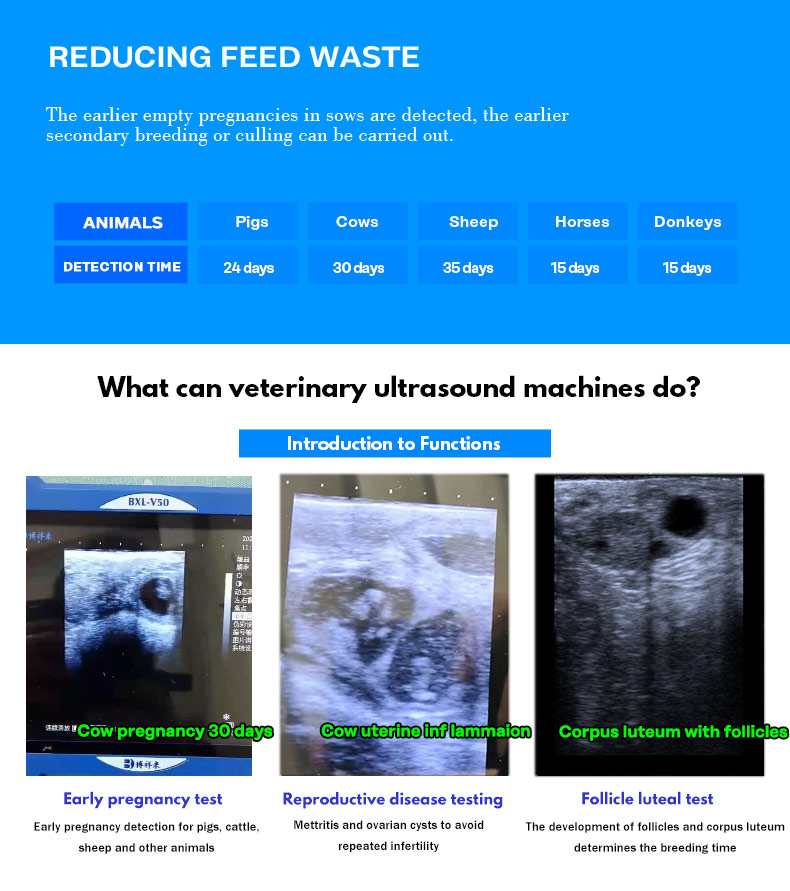Ultrasound Insights: Tailoring Care for Different Beef Breeds
As global beef production evolves, producers face increasing pressure to raise healthy, high-performing animals efficiently and humanely. Achieving this goal requires not just good stockmanship but also precision tools that help make informed decisions. One such tool—ultrasound imaging—has become essential for evaluating beef cattle at various stages of life and productivity.
Veterinary ultrasound, though once limited to reproductive assessments, now plays a broader role in herd health management. With tailored scanning protocols, producers can enhance decision-making based on breed-specific characteristics.
Breed-Specific Differences Matter
Beef cattle breeds vary widely in size, growth rate, fat deposition, muscle conformation, and reproductive physiology. These differences directly influence how and when ultrasound should be used.
For instance, Bos taurus breeds like Angus or Hereford have different body compositions and growth curves compared to Bos indicus types like Brahman or Nelore. These biological distinctions necessitate adjustments in scanning protocols to ensure accuracy and actionable insights.

Reproductive Management with Ultrasound
Reproductive efficiency is a critical economic driver for beef operations. Ultrasound allows for early pregnancy detection, fetal sexing, and monitoring of ovarian function. But breed-specific reproductive traits can influence timing and interpretation.
-
Angus and other British breeds often show clear ovarian structures and consistent cycles, allowing accurate follicular wave monitoring.
-
Brahman-influenced breeds may require a more cautious approach due to higher stress sensitivity and subtler reproductive signs.
In addition, early pregnancy diagnosis—often conducted at 28–35 days post-breeding—can be optimized based on breed maturity. Ultrasound enables producers to cull non-pregnant animals early, improving resource allocation and feed budgeting.
Muscle and Fat Evaluation
Ultrasound is indispensable for carcass trait prediction, including ribeye area (REA), backfat thickness (BF), and intramuscular fat or marbling (IMF). These traits determine carcass quality and market value.
-
Continental breeds like Charolais or Limousin are known for lean muscle development and often require scanning protocols that emphasize REA.
-
Angus and Shorthorn cattle, which typically deposit more marbling, benefit from IMF scoring during feeding trials or genetic evaluation.
Tailoring ultrasound settings—like probe frequency and scanning location—helps capture meaningful images that reflect these breed-specific priorities.

Growth Monitoring and Structural Soundness
Monitoring skeletal and muscular development can help producers identify animals with growth anomalies or structural weaknesses. Scanning long bones, joints, and muscle mass is particularly valuable in large-frame breeds where early structural issues can lead to lameness or decreased longevity.
Breed temperament also affects scan quality. Brahman-cross cattle may require low-stress handling facilities and extra time to get reliable readings. Using chute-side wireless ultrasound units can improve workflow in such cases.
Integrating Data into Selection and Breeding
Ultrasound results, when combined with genomic and performance data, can significantly improve breeding decisions. Estimated Breeding Values (EBVs) and Expected Progeny Differences (EPDs) increasingly incorporate ultrasound data for traits like IMF and REA.
Breed associations in countries like Australia and the U.S. (e.g., Angus Australia, American Simmental Association) have adopted ultrasound data as part of their genetic evaluation systems. Tailoring these systems by breed ensures that selection pressures align with production goals and environmental constraints.
Conclusion: A Smart Fit for Each Breed
Ultrasound is not a one-size-fits-all tool. Its full value is realized when protocols are adjusted based on breed physiology, management goals, and environmental conditions. By embracing breed-specific ultrasound approaches, beef producers can increase productivity, reduce health risks, and make smarter genetic decisions.
References:
-
“Beef Cattle Ultrasound Guidelines.” University of Missouri Extension. https://extension.missouri.edu/publications/g2057
-
“Using Ultrasound for Beef Cattle Selection.” American Simmental Association. https://www.simmental.org/site/index.php/ultrasound
-
“BreedPlan Technical Notes: Ultrasound Scanning.” Angus Australia. https://www.angusaustralia.com.au
-
“Improving Reproductive Performance in Beef Herds.” University of Florida IFAS Extension. https://edis.ifas.ufl.edu/pdf/AN/AN21400.pdf





